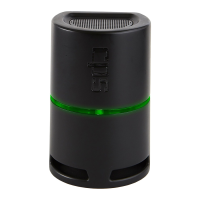5
AIR QUALITY (Issues, Causes, Solutions)
+
Indoor Air Quality
Issues
Potential Causes Recommended Solutions
Recommended
Indoor Levels
Hot or Cold
Temperatures
in Rooms
Unbalanced HVAC System
Install Home Balancing Kit in all supply
grilles
The World Health Orga-
nization recommends
64 °F (18 °C)
Building Envelope Exces-
sive Leaking
Perform blower door test
Perform leak inspection of all potential
leak sources (windows, doors, chimney,
wall insulation)
Missing or Damaged
Insulation
Perform thermal imaging inspection to de-
termine sources of insufcient insulation
High
Humidity Level
Return and/or Supply Duct
Leaks
Perform leak inspection and repair all
leaks in ductwork
OSHA recommends
20–60% relative
humidity.
Oversized AC Unit/Short
Cycling
Calculate appropriate equipment size and
adjust accordingly
Building Envelope Exces-
sive Leaking
Perform blower door test
Perform leak inspection of all potential
leak sources (windows, doors, chimney,
walls insulation)
High PM
2.5
(0-
2.5 microns)
Dirty Ductwork
Clean and sanitize ducts
US EPA recommends
an average <12 μg/
m3 or less per day over
duration of 1 year.
Add whole home UV/anti-bacterial system
Organic Growth on Coils/in
Air Handler
Clean and sanitize cooling coils, conden-
sate drain pan/lines and interior of air
handler cabinet
Add UV light and antimicrobial tabs to
condensate drain pan
Return Duct Leaks, Con-
taminate Inltration
Perform leak inspection and repair all
leaks in ductwork
Dirty Supply Grilles Clean supply grilles
High PM
10.0
(2.5-10.0 mi-
crons)
Poor Filtration
Add return lters with MERV rating (≥ 12) US EPA 24-hour stan-
dard <65 μg/m3 based
on the 3-year average
of the annual 98th per-
centile concentrations.
Add local HEPA ltration to remove parti-
cles > 3 microns
High tVOC Level
VOC Contaminants
Remove contaminants inside home or
garage
No federally enforce-
able limits, but 50 ~
325 ppb are thought
to be acceptable, but
recommended to not
exceed 500 ppb.
The U.S. EPA reports that
on average, 60% of VOC's
enter the home through an
attached garage
Improve ventilation inside home or garage
Add garage ventilation fan to exhaust/
create negative pressure
Seal garage/mud door from home
Mechanical equipment
issues
Inspect gas appliances and heaters for
leaks
High CO
2
Level
Insufcient returns
Add or increase size of return registers in
bedrooms
350-1,000 ppm is
typical level in occupied
spaces with good air
exchange.
Inadequate ventilation
Add ERV (Energy Recovery Ventilation)
or HRV (Heat Recovery Ventilation) to
exchange stale air with fresh air
High Or Low
Building Pres-
sure
Negative air pressure in
summer
Inspect windows, doors or other openings
in the building envelope for air leaks
Slightly positive +.02-
in. to +.03-in.WC. can
make a huge difference
in building comfort and
efciency.
Negative air pressure in
winter
Positive air pressure in
summer
Positive air pressure in
winter

